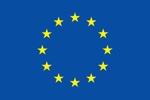Long-wavelength QCLs for BTEX and propane detection through QEPAS
The long-wavelength infrared range above 12 μm is today almost unexplored by laser-based molecular spectroscopy due to the lack of suitable sources. Up to now, QCLs emitting at room temperature in the range 14-20 μm have been demonstrated only by UM with the InAs/AlSb material system. ESR1.4 and ESR1.2 will work in close collaboration, with the goal to exploit this new spectral band for laser molecular spectroscopy.
Several gas species present their main absorption features in this spectral range, among them BTEX and propane are of great interest for environmental, biomedical and petrochemical applications. There is wide interest in developing analytical tools to quantitatively monitor such contaminants at trace concentration levels. The aim of this PhD project is to develop efficient single mode QCL sources in terms of laser power, operating temperature, output beam profile and stability, with emission targeting the main absorption of BTEX and propane. Propane will be targeted using the absorption line falling at 13.36 μm, benzene will be detected using the absorption line located at 14.78 μm, for toluene a strong absorption line falls around 13.67 μm, while the xylene absorption line located at 14.56 μm will be targeted. Detailed studies of the absorption spectra of ethylbenzene will be performed in order to identify the strongest absorption features to be targeted for QEPAS sensing. He/she will also be in charge of the QCL characterisation in order to provide rapid feedback to the design stage. Finally, he/she will select the best design and qualify the lasers for the application using the QEPAS setups of UM before transferring them to UNIBA for QEPAS, and TU-WIEN for PTS in collaboration with ESR1.2.
These laser sources will be optically coupled with QEPAS ADMs using hollow core waveguide (HCW). The ADM will include a custom quartz tuning fork and a microresonator system. In this way the final sensor system will be compact and opticless. The first laboratory prototype QEPAS sensor implementing QCLs operating at wavelengths between 13 μm and 20 μm for the detection of BTEX and propane down to detection limits in the parts per billion range will be realised. In the last part of the project all efforts will be dedicated to move towards a compact QEPAS sensor system down to a portable shoe-box size, matching the requirements for real-world applications such as environmental monitoring or petrochemical downstream, midstream and upstream operations. At the end of the 3rd year, the sensors will be tested for out-of-lab operation according to the specific use and applications.
Expected Results
- Realisation of novel QCLs operating near 13.4 μm
- Realisation of a laboratory QEPAS prototype for BTEX and propane detection
- Test and validation of a shoe-box size QEPAS sensor for in-situ BTEX and/or propane detection
Timeline
* N.B. Secondments and timings shown are indicative only, and may be subject to change.

 Kumar Kinjalk
Kumar Kinjalk Université de Montpellier
Université de Montpellier Università degli studi di Bari Aldo Moro
Università degli studi di Bari Aldo Moro





